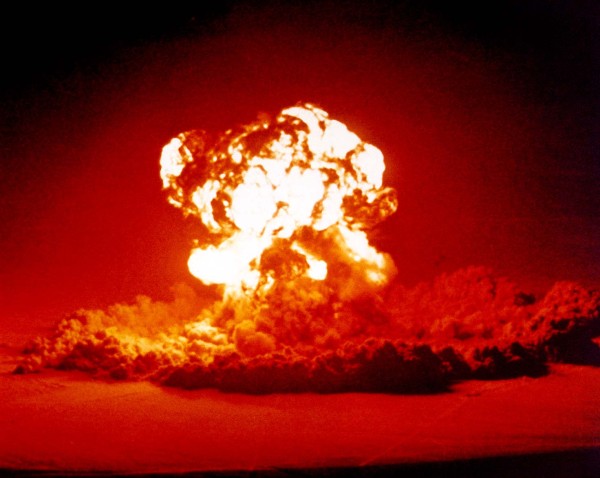“I hate war,” Koji Hosokawa told me as we stood next to the A-Bomb Dome in Hiroshima, Japan. The skeletal remains of the four-story building stand at the edge of the Hiroshima Peace Memorial Park. The building was one of the few left standing when the United States dropped the atomic bomb on Hiroshima at 8:15 a.m. on Aug. 6, 1945. Three days later, the U.S. dropped the second bomb on Nagasaki. Hundreds of thousands of civilians were killed—many instantly, and many more slowly from severe burns and what would come to be understood as radiation sickness.
The world watches in horror this summer as military conflicts rage, leaving destruction in their wake from Libya, to Gaza, to Syria, Iraq, Afghanistan and Ukraine. Never far from the dead and injured, nuclear-armed missiles stand by at the alert, waiting for the horrible moment when hubris, accident or inhumanity triggers the next nuclear attack. “I hate war,” Hosokawa reiterated. “War makes everyone crazy.”
Koji Hosokawa was 17 years old in 1945, and worked in the telephone exchange building, less than 2 miles from ground zero. “I miraculously survived,” he told me. His 13-year-old sister was not so fortunate: “She was … very close to the hypocenter, and she was exposed to the bomb there. And she was with a teacher and the students. In all, 228 people were there together with her.” They all died.
We walked through the park to the Hiroshima Peace Memorial Museum. There, on display, were the images of death: the shadows of victims burned into the walls of buildings, the pictures of the fiery chaos that followed the bombing, and of the victims of radiation. Almost seven decades later, Hosokawa’s eyes tear up in the recollection. “My biggest sorrow in my life is that my younger sister died in the atomic bomb,” he said.
The day before my meeting with Koji Hosokawa, I sat down in Tokyo to interview Kenzaburo Oe, winner of the Nobel Prize for Literature. He was 10 years old in 1945. “When Japan experienced the bombings of Hiroshima and Nagasaki, this was a greater catastrophe than anything we had ever known,” he told me. “The feeling of having to survive this, go beyond this and renew from this, was great.”
Now nearing 80, Kenzaburo Oe thinks deeply about the connection between the atomic bombings and the disaster at Fukushima, the nuclear power plant meltdown that began when Japan was struck by a devastating earthquake and tsunami on March 11, 2011. The Nobel laureate told the French newspaper Le Monde: “Hiroshima must be engraved in our memories: It’s a catastrophe even more dramatic than natural disasters, because it’s man-made. To repeat it, by showing the same disregard for human life in nuclear power stations, is the worst betrayal of the memory of the victims of Hiroshima.”
After the Fukushima disaster, Oe said, “all Japanese people were feeling a great regret … the atmosphere in Japan here was almost the same as following the bombing of Hiroshima at the end of the war. Because of this atmosphere, the government [in 2011], with the agreement of the Japanese people, pledged to totally get rid of or decommission the more than 50 nuclear power plants here in Japan.”
A-bomb survivors like Koji Hosokawa, writers like Kenzaburo Oe, and hundreds of thousands of others, now elderly, have lived through the dawn of the nuclear age in 1945 and seen its potential for devastation recently, at Fukushima. Nuclear-weapon arsenals and nuclear power plants each pose separate, horrific risks to humanity, yet the two are connected, with the byproducts of some power plants usable as material for nuclear warheads. Whether from an act of war, or an act of terrorism from a so-called loose nuke in the hands of a non-state actor, or from an uncontrolled meltdown at a nuclear power plant, nuclear disasters are massively destructive. Yet they are completely preventable. We need a new way of thinking, a new effort to eliminate nuclear weapons and shift to safe, renewable energy, worldwide.
As we were leaving the Hiroshima Peace Memorial Park, Koji Hosokawa told me to stop. He looked me in the eye, and told me not to forget the victims: “People lived here. They lived here.”
Denis Moynihan contributed research to this column.










